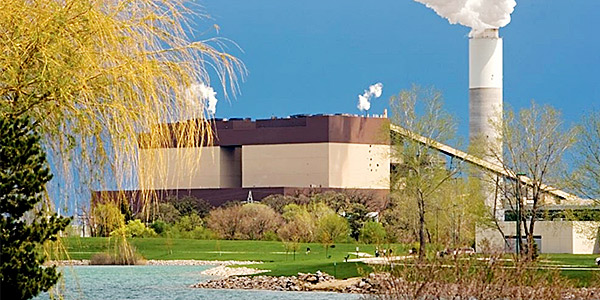By Amanda Durish Cook
FERC on Tuesday ordered a closer look into whether We Energies accurately estimated customer savings stemming from the retirement of the Pleasant Prairie coal plant in southeastern Wisconsin.
The commission’s Dec. 11 ruling accepted, then suspended, We Energies subsidiary Wisconsin Electric Power Co.’s new wholesale tariff that includes the remaining costs on the plant, setting the rate for hearing and settlement judge procedures over the company’s claims of ratepayer savings related to the shutdown (ER19-103).
We Energies in April permanently closed the 1,190-MW coal plant, which entered service in 1980.
At retirement, Pleasant Prairie had an unamortized plant balance of approximately $665 million, which We Energies sought to amortize over about 23 years through an adjustment to its rate base. The company contended the recovery is just and reasonable, citing FERC’s 1996 decision to allow Yankee Atomic Electric Co. to recover from ratepayers 100% of its remaining unamortized investment in its nuclear plant after a study showed the plant’s operating costs exceeded the value of the its energy output.
Between 2003 and 2007, We Energies invested $365 million worth of capital, environmental and reliability investments into Pleasant Prairie, all of which were approved by the Public Service Commission of Wisconsin.
“Although Pleasant Prairie has reliably served Wisconsin Electric’s customers for nearly 38 years, its value to customers began to decrease significantly after 2008 due to a significant loss of industrial load following the recession in 2007-2008 and improvements in energy efficiency; declining energy prices in MISO as a result of increased competition from natural gas and renewable energy resources; and a corresponding reduction in Pleasant Prairie’s dispatch in MISO markets,” the company told FERC.
We Energies says Pleasant Prairie’s retirement will save retail and wholesale customers anywhere from $2 billion to $3.2 billion.
But wholesale customer Great Lakes Utilities challenged the customer savings estimates, arguing that We Energies’ assumptions of a hypothetical carbon tax imposed in 2028 and other pricey environmental regulations on the coal plant are “not sufficiently supported.”
The commission agreed that the cost-savings assumptions could use more evaluation.
FERC said it “cannot determine on the record before us whether the third prong of the test set forth in Yankee Atomic has been satisfied such that there will be substantial savings for customers as a result of Pleasant Prairie’s retirement.”
In the Yankee Atomic decision, FERC said a 100% recovery of a prematurely retired plant’s unamortized balance is warranted when three criteria are met: the investment and retirement decisions are prudent, the plant has already provided years of beneficial service to customers and the retirement results in “substantial cost savings to customers.”
While FERC said We Energies demonstrated prudent investment and retirement decisions, and that Pleasant Prairie was beneficial to customers over its nearly four decades of reliable operation, it could not definitively answer without further proceedings whether the company would achieve substantial customer cost savings from retirement of the plant.




